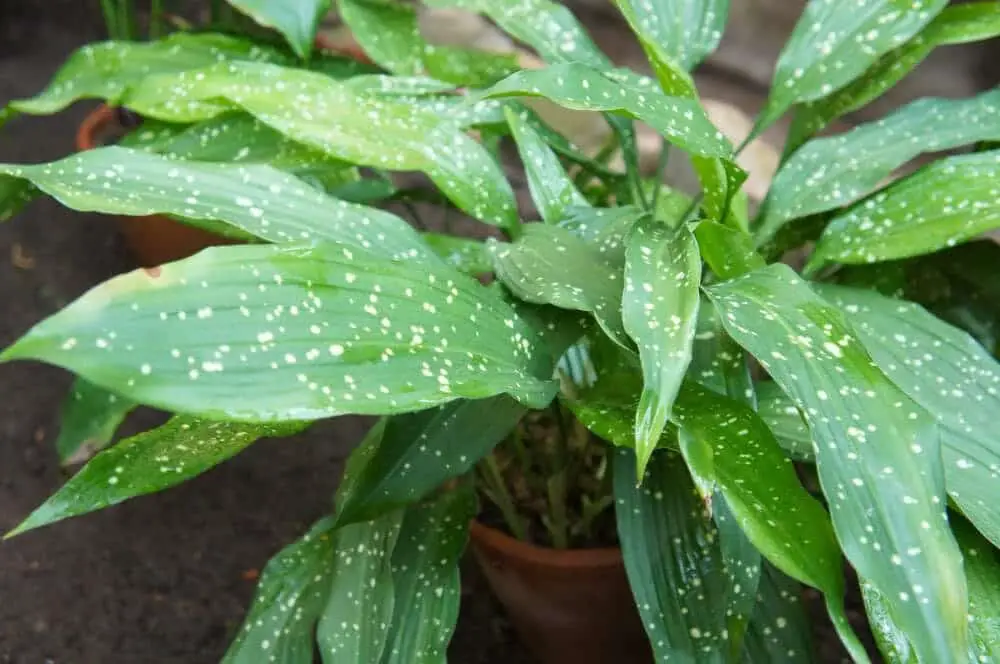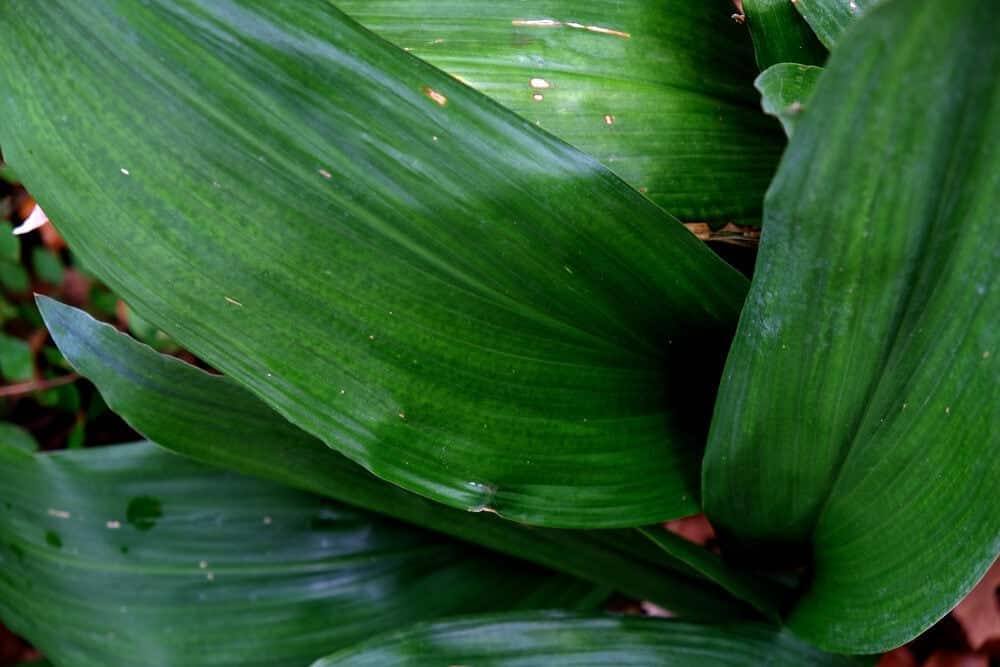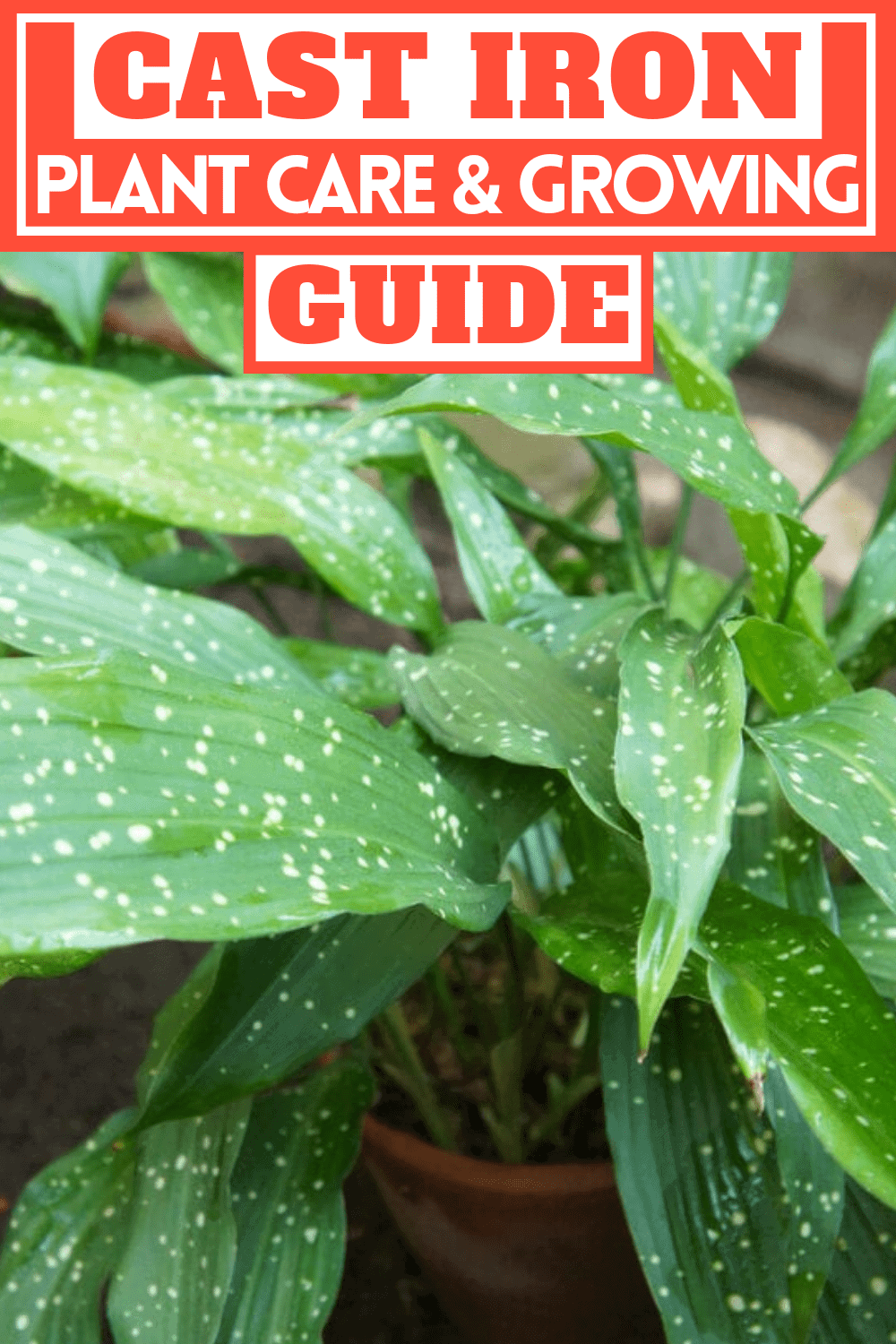The Cast Iron plant is a hardy houseplant and in some regions, it is a perennial favorite. It is also known as a ballroom or iron plant.
The plant can survive even the most extreme conditions so it is great for those that do not have a lot of time to take care of plants. The Cast Iron plant will thrive where other plants would shrivel and die.
Growing this as an indoor plant is rewarding and easy. It is a member of the Lily family and is a native of China.
Cast Iron Plant Care & Growing Guide
1. Light Requirement
It can grow indoors in low light. You do not want to put it in direct sunlight as the rays of the sun can burn the leaves, turning them brown.
2. Water
Although it is a plant that is not finicky about regular watering, in very dry periods it will need to have plenty of water. During its growing season, which is spring and summer, the Cast Iron plant should be watered regularly to help establish their extensive root system. After the roots are established, you can reduce the watering schedule.
One unique thing about the Cast Iron plant, when grown indoors , is that you should water it with filtered water. The minerals from regular tap water can accumulate in the tips of the leaves and if you use soft water, it can stunt the growth of the plant.
3. Climate
USDA Hardiness Zones 7-11
4. Soil
The Cast Iron plant thrives well in organic soil and a yearly dose of all-purpose fertilizer, in the spring before the new growth period begins. The soil pH should be 5.5-6.5.
5. Temperature
The Cast Iron plant can endure temperatures below 30 degrees Fahrenheit, but the average temperature should be 60-75 degrees Fahrenheit.

6. Repotting
Normally, the Cast Iron plant does not need to be repotted but if it does, do it in the spring. On average, if it needs repotted, it will be once every two –three years. One way to know if your Cast Iron plant needs to be repotted is to look and see if the roots are growing over the edge.
7. Speed of Growth
It is a slow grower but will live for many years. It will grow to its mature size in four to five years.
8. Height and Spread
When the Cast Iron plant matures, it will have reached the height of about two feet and leaves 24 inches long.
9. Flowers
The flowers of the Cast Iron plant are small and purple in color. They are hidden in its foliage near the surface of the soil. You really have to look to find them. Although the flowers may be hard to see, what you cannot miss is the hardy, robust, dark green leaves. The tough foliage lasts for weeks.
10. Trimming
The Cast Iron plant does not need to be trimmed but if you want to grow more plants, you can trim them. You do this by separating the stems from the roots. You want to do this in the spring before the growing season starts. You may also need to trim some of the leaves at the stem near the soil if they start to deteriorate.

Is Cast Iron Plant Poisonous?
It is non-toxic to animals and humans
Can Cast Iron Plant grow in Water?
No, when you are growing a new plant, the stem has to be planted in soil to get the roots to grow.
How to get Cast Iron Plant to Flower?
The Cast Iron plant sometimes does not grow flowers but to get them to grow, make sure that they have the right light, water, and temperature. You can also separate the stems from the roots and repot them to grow other plants.
Keep reading: Poinsettia Care & Growing Guide
Common Plant Diseases
Cast Iron Plant is prone to a variety of diseases, including:
- Anthracnose—this is a fungal disease that will turn the tips of the leaves brown or yellow. If it is not taken care of, it will spread and kill the plant. If you see this, make sure that you nip off the leaves that are affected immediately. If the problem continues, you may have to transfer the plant into another pot with new soil.
- Fusarium—this is a fungal that causes leaf spot. The spots on the leaves turn from tan to red-brown and may have a bright yellow ring around them. All you need to do is remove the infected leaves. You may have to use a fungicide if you have a severe problem
- Sclerotium Rolfsii—this is a disease that attacks the stem and looks like dark-brown spotting on the stem near the soil or just below the level of the soil. If you plant becomes infected, the entire plant needs to be thrown away.
- Mealy bugs, spider mites—if your plants are affected by these insects, you should try to separate the healthy plants from the ones that are deceased. You can spray the leaves that are affected with Neem oil. You can also use a soapy mixture to lightly spray the leaves.
Also read:
Conclusion
- Outdoors, the Cast Iron plant is often used as ground cover under trees in landscaping.
- It can also be used as an in-between filler or background plant in your flower bed.
- When it was first introduced to America over 100 years ago, it was originally used as a parlor decorative plant during the Victorian era. Since then it has gone in and out of fashion.
- The Cast Iron plant grows best in a 10 inch pot.
- Wipe the leaves with a damp cloth a few times during the year to keep the leaves looking dark green.
- The Cast Iron plants do not seem to be bothered by insects except mealy bugs or spider mites.
- They are not easily damaged by cold weather.
- The strappy, upright leaves grow from an underground rhizome.
- It is thought that it got its name because it is hard to destroy and is tolerant to neglect.

Victoria is the owner and main author of hobby plants. She loves spending her free time in her garden planting and taking care of her plants. Victoria hopes you enjoy the content here!
![Mother Of Thousands Plant [Complete Plant Care Guide] Mother Of Thousands Plant [Complete Plant Care Guide]](https://www.hobbyplants.com/wp-content/uploads/2022/07/mother-of-thousands-plant-300x158.jpg)
![Majesty Palm Plant Care: [Complete Beginner's Guide] Majesty Palm Plant Care: [Complete Beginner's Guide]](https://www.hobbyplants.com/wp-content/uploads/2022/08/majesty-palm-care-300x158.jpg)
![Exotic Angel Plant Care: [Complete Beginner's Guide] Exotic Angel Plant Care: [Complete Beginner's Guide]](https://www.hobbyplants.com/wp-content/uploads/2022/08/exotic-angel-plant-care-300x158.jpg)
![Snow White Waffle Plant: [Complete Care Guide] Snow White Waffle Plant: [Complete Care Guide]](https://www.hobbyplants.com/wp-content/uploads/2022/08/snow-white-waffle-plant-300x158.jpg)
![Waffle Plant Care: [Complete Beginner's Guide] Waffle Plant Care: [Complete Beginner's Guide]](https://www.hobbyplants.com/wp-content/uploads/2022/08/waffle-plant-300x158.jpg)
![Bird Of Paradise Plant Care: [Complete Beginner's Guide] Bird Of Paradise Plant Care: [Complete Beginner's Guide]](https://www.hobbyplants.com/wp-content/uploads/2022/08/bird-of-paradise-plant-300x158.jpg)
![Purple Passion Plant Care: [Complete Beginner's Guide] Purple Passion Plant Care: [Complete Beginner's Guide]](https://www.hobbyplants.com/wp-content/uploads/2022/08/purple-passion-plant-care-300x158.jpg)
![China Doll Plant Care: [Complete Beginner's Guide] China Doll Plant Care: [Complete Beginner's Guide]](https://www.hobbyplants.com/wp-content/uploads/2022/09/china-doll-plant-care-300x158.jpg)
![Polka Dot Plant Care: [Complete Beginner's Guide] Polka Dot Plant Care: [Complete Beginner's Guide]](https://www.hobbyplants.com/wp-content/uploads/2022/09/polka-dot-plant-300x158.jpg)
![Mona Lisa Lipstick Plant Care: [Complete Beginner's Guide] Mona Lisa Lipstick Plant Care: [Complete Beginner's Guide]](https://www.hobbyplants.com/wp-content/uploads/2022/09/lipstick-plant-mona-lisa-300x158.jpg)
![Yucca Cane Plant Care: [Complete Beginner's Guide] Yucca Cane Plant Care: [Complete Beginner's Guide]](https://www.hobbyplants.com/wp-content/uploads/2022/09/yucca-cane-plant-care-300x158.jpg)
![Bush On Fire Croton Plant Care: [Complete Beginner's Guide] Bush On Fire Croton Plant Care: [Complete Beginner's Guide]](https://www.hobbyplants.com/wp-content/uploads/2022/09/bush-on-fire-croton-300x158.jpg)